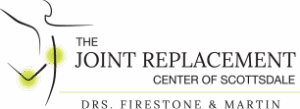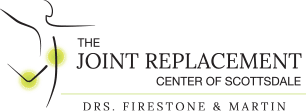Executive Summary
- Some Canadians find managing prescriptions after surgery in the United States to be complex due to differing regulations, refill processes, and insurance stipulations.
- In the U.S., prescriptions need to be written by a licensed provider within the state where care is given. Some medications, especially controlled substances, are subject to strict tracking, refill rules, and dosage limits.
- After a procedure, U.S. surgeons usually write prescriptions before the patient is released. Canadians should fill them while they are still in the states to start their post-surgery medication regimen right away.
- Ensuring coordination between your healthcare providers in the U.S. and Canada can increase your chances of having a safe, effective recovery and medication continuity.
Prescription Management for Canadian Patients
Canadians traveling to the United States for medical procedures can experience a wide range of benefits, such as skipping the line and accessing surgery sooner. Nevertheless, the process requires diligent planning. Canadian patients should be ready to play an active role in their recovery process through careful medication management.
Whether they have pain relief medications, antibiotics, or other post-surgical prescriptions, traveling patients need to know how to handle their medications correctly for safety, efficacy, and regulatory compliance. When traveling across borders for medical care, Canadians may face obstacles like different pharmaceutical regulations, unfamiliar pharmacy systems, and limited insurance coverage for U.S.-issued prescriptions. Without proper planning, these obstacles can cause delays, missed doses, or compliance issues during imperative stages of recovery.
The guide below covers how prescriptions are issued, filled, and monitored in the U.S., and gives you tips so that your Canadian care team can stay informed. Read through the following considerations to learn about border regulations, pharmacy logistics, and cost considerations to remain compliant with laws and avoid gaps in your treatment.
Understanding Prescription Regulations
Medication laws and systems differ between countries, so medical tourists need to recognize the differences between Canada and the United States that affect prescription medication.
In the United States, prescriptions must be written by a licensed provider within the state where care is given. Some medications, including controlled substances like opioids, are subject to strict federal- and state-level tracking to avoid unlawful distribution or other forms of misuse. Refill rules and dosage limits may also differ, especially for narcotics used for pain management.
In Canada, prescriptions are usually more standardized nationwide. Additionally, certain medications may not have direct equivalents, meaning U.S. formulations or dosages of pain medication may diverge from what’s available through Canadian pharmacies.
How Rules Differ Based on Medication Types
Some common medication types that traveling patients may encounter and rules they may be subject to include:
- Pain management – Sometimes, strong pain medications may require special handling or may not be refillable in Canada without a new prescription.
- Antibiotics – To avoid complications or resistance, duration of usage and dosing schedules must be followed exactly as prescribed.
- Anticoagulants – Blood-thinning medications demand careful monitoring and coordination between U.S. and Canadian providers to maintain safe dosage levels.
Understanding the nuances of the medication you are taking ensures you comply with both U.S. and Canadian regulations while recovering smoothly. Be sure to discuss concerns with the medical providers writing your prescriptions.
Filling Prescriptions in the U.S.
After performing a surgery, U.S. surgeons typically provide prescriptions before their patient is discharged. Filling the prescription locally is often the quickest and most convenient way for out-of-town patients to start their post-surgery medication regimen.
Some things you can do to make the prescription-filling process easier are:
- Locate nearby pharmacies early on – Before your surgery, ask your U.S. medical provider for a list of nearby pharmacies, including a mixture of major chains and local options, that are suitable for international patients.
- Check insurance coverage – Many Canadian insurance plans don’t cover U.S. pharmacy costs, so you will likely have to pay out of pocket. Still, depending on your plan, you may be able to submit receipts for reimbursement.
- Bring proper identification – You will need your passport and travel insurance information, if applicable, to verify your identity for prescription fulfillment.
- Documentation for controlled substances – For strictly regulated medications like opioids, additional paperwork may be needed, and you should always carry your prescription documentation when traveling.
Many U.S.-based pharmacies offer online refill requests and consultation services for ease and accessibility, making them incredibly helpful for any Canadian patients staying in the U.S. for an extended period.
Coordinating Prescriptions with Canadian Providers
Continuity of care is essential for recovery when treatment involves multiple healthcare systems. To make things as seamless as possible, you should share your medication list and dosage details with your Canadian doctor or pharmacist as soon as your prescriptions are filled in the U.S. This step guarantees that your local provider understands what medications you are taking, which can help prevent duplication, dosage confusion, or adverse interactions with other medications.
Some other things you can do to ensure seamless coordination are:
- Bring all discharge paperwork and prescription labels home so you have access to dosage instructions, refill information, and drug identification codes that your Canadian pharmacist will need.
- Schedule a follow-up appointment with your primary care provider in Canada to review your medications and make adjustments if required.
- Connect with U.S. surgeons through virtual consults to receive postoperative care and medication guidance from the individuals who carried out your procedure.
Effective communication between your U.S. surgical team and your Canadian care providers is the best way to promote safety, reduce complications, and encourage a faster, pain-free recovery.
Our compassionate team at The Joint Replacement Center of Scottsdale will take all the steps necessary to help you overcome pain and ensure a smooth recovery.Get Back to Your Lifestyle
Travel Considerations and Medication Safety
To eliminate issues while crossing the border with prescription medication, patients should pay attention to detail. Both U.S. Customs and the Canada Border Services Agency have in-depth regulations about bringing medication across international lines, so it is important to know what to pack and how to pack it.
Some of the best practices for ensuring safe travel include:
- Keep medications in their original containers with clearly labeled prescriptions that feature your name, the prescribing physician, and dosage details.
- Carry a copy of your prescription and a letter from your medical provider, especially for controlled substances or injectable medications.
- Pack medications in your carry-on luggage to minimize the risk of losing them or exposing them to the extreme temperatures that checked bags undergo.
- Coordinate with your surgeon and a Canadian provider to plan for refills before traveling home to avoid lapses if you need more medication.
- Check customs limits on the quantity of medication you can bring internationally, which is typically up to a 90-day personal supply, but controlled substances may have stricter limits.
If Canadians follow these travel tips, they can ensure preparedness and avoid issues at the border, allowing their treatment to continue smoothly and legally.
Insurance and Cost Considerations
Many Canadian patients wonder if their insurance will cover U.S. prescriptions. The answer depends on the individual’s specific plan and the nature of their travel coverage, but as a general rule, most Canadian provincial health plans do not cover medications dispensed outside of Canada. Still, if you have travel insurance or supplemental private coverage, you may be eligible for partial reimbursement.
How Canadians Can Manage Prescription Costs in the U.S.
Some ways you can manage prescription costs while practicing medical tourism are:
- Ask for generic alternatives, which are often available at a fraction of the cost and are still just as effective.
- If you are going to make reimbursement claims, request an itemized receipt from the U.S. pharmacy that includes dosage and prescribing physician details.
- Compare prices using pharmacy apps or websites because they can vary significantly between pharmacies within the same U.S. city.
- While some travel health policies cover prescriptions, reimbursement can take time to process, so it is essential to budget for immediate out-of-pocket expenses.
If you plan to have surgery in the U.S., you can ask the medical facility about estimated medication costs in advance. Knowing your options upfront can help you prepare financially for post-op care abroad.
Tips for Smooth Prescription Management
Proper medication management is the key to a safe recovery with minimal side effects and complications after surgery. The table below features various ways medical tourists can stay organized.
| Strategy | Helpful Tops |
| Keep an Up-to-Date Medication List | Write down each drug’s name, dosage, frequency, and prescribing doctor, and bring this list to every follow-up appointment |
| Set Reminders for Dosing | Use a phone app, alarm, or pill organizer to avoid missing or doubling up on doses |
| Track Side Effects | Take note of any unusual reactions you have and report them to your surgeon or primary care provider as soon as possible |
| Store Medications Safely | Closely follow all storage instructions, especially for temperature-sensitive medications, to ensure efficacy |
| Maintain Open Communication | Regularly inform both your U.S. and Canadian healthcare teams about your progress and any concerns you have regarding your medication regimen |
Leveraging digital tools can make this process easier, helping you stay proactive, organized, and focused on recovery instead of paperwork. Try using apps such as Medisafe or MyTherapy, which have features that allow patients to log dosages, track symptoms, and easily share updates with their care providers.
Ensure Proper Medication Management After Surgery
After a surgery in the United States, Canadians must manage their prescriptions safely and effectively across borders, making it important to plan ahead to avoid unnecessary complications. By understanding relevant prescription rules, preparing for travel logistics, and coordinating with your local and U.S. care teams, you can maintain medication compliance and recover as effectively as possible.
The compassionate, knowledgeable team at Joint Replacement Center of Scottsdale frequently assists international patients, including many from Canada, through both in-person and virtual care. After their surgery, we support patients through every step of their recovery, from medication management to long-term follow-up. Our Scottsdale-based medical center is proud to have so many Canadian success stories, and we are excited to help you next.
Contact the Joint Replacement Center of Scottsdale today to schedule an initial consultation. Our team is ready to create a tailored treatment plan and help you navigate your post-surgical care safely, effectively, and confidently, no matter where you call home.

